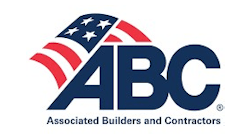A variety of machines will move earth, but wet soil causes particular problems for most of them. Not only is it heavier and harder to manipulate, but the wet ground also makes driving several-ton machinery difficult. Waiting for the soil to dry might be an option, but what if wet is the whole purpose of the site?
Davis, CA’s Chris Galloway (CG) Construction faced these challenges when the firm was contracted to reshape a land parcel into a wildlife slough. “Originally, this Sutter County land was marsh-Gilsizer Slough,” says owner Chris Galloway. “The land was reclaimed in the 1920s and ’30s, and used for agriculture. We restored this 80-acre parcel into a wetland, and increased the size of the slough. The landowner participated in the restoration, as it was a mitigation of the threatened giant garter snake, Thamnophis gigas.”
The project was undertaken in 2009. “We excavated for waterways, making long, meandering ponds,” he says. “Digging those ponds entailed going down five feet in grade, and 18 inches below grade we found groundwater-so this could have been tough going, had we not used a K-Tec scraper instead of other earth-moving equipment.”
To move the 250,000 yards of soil, Galloway used three models of K-Tec scrapers. “We wanted something cost-effective and efficient to operate-also something that works in soft ground,” Galloway explains. “Other brands can be pulled, but K-Tecs you can also push with a dozer to get bigger loads. The 1243-ADT is a new design, something we purchased to be on the cutting edge. It hauls 20% more dirt than the next smaller model, and it is pulled with an articulating dump truck [ADT] instead of an agriculture tractor. We can go 30 miles per hour, twice the speed of an ag tractor. That certainly makes the work go faster.”
K-Tec Earthmovers Inc., which was established in 2000, manufactures in Rosenort, MB. The company produces 13 models of land levelers, as well as eight different scraper models, all with varying sizes and capacities. Those working in narrow spaces can use the 9.525-a 9.5-foot-wide model that carries a heaping 25 cubic yards. CG Construction used the 12-foot-wide 1228 and 1236 (with respective 28- and 36-cubic-yard capacities), and the 1243-ADT (43. Cubic yards), one of three K-Tec models specifically designed to use with an articulating dump truck. “We built the ADT line for speed,” says K-Tec Western USA & International Sales Manager Eric L. Stoddard. “Plus, articulating dump trucks are more maneuverable. We build scrapers to match the power unit; originally that was only ag tractors, which are in shorter supply these days. ADTs offer construction crews many advantages. They’re an industrial power unit; they offer flotation, a smooth ride, and fuel savings; they come with automatic transmissions; and allow easy switching between a rock truck and a scraper power unit.”
With the help of K-Tec scrapers, CG Construction sculpted the contours for a wildlife slough in Sutter County, CA.
As a family-owned firm, K-Tec doesn’t “design by committee”-engineers are very hands-on. “We tested our 1254-ADT, the world’s largest scraper, near Amarillo, TX. The project engineer was there, watching the scraper as he worked on his laptop and discussing modifications with K-Tec management, along with input from the contractor. That’s how things get done. And we’ve proved our scrapers in a variety of soils, Stoddard goes on. In fact, we recently sold scrapers to a firm in Saudi Arabia.”
K-Tec scrapers are also built for the rough-and-tumble construction life. “K-Tec’s design includes the highest percentage of Swedish Hardox steel in the industry,” says Marketing Manager Kelly Goossen. “Hardox steel is so strong, it takes a 500 tons of pressure to bend it. If during its manufacturing process, the steel requires a one-degree bend, it has to be bent 18 degrees, because it will spring back 17 degrees-it’s that strong.” Proud of its Hardox connections, K-Tec’s Web site contains entertaining videos that prove neither the strongest men in Sweden, nor “the crazy crane operator” or the “monster machine man” can even dent something made of the Swedish steel.
With a seven-man crew working four machines on a typical day, Galloway used the K-Tec scrapers to move and contour the site’s soil, building upland areas, and excavating winding waterways, which were designed to be snake-friendly-a design reviewed and approved by many different agencies prior to construction. “We kept taking layers of soil-lots of sand, loam, and clay-off, discing between scrapings, to air things out, and get the soil as dry as possible, so it was easier to work with,” Galloway says. “Wet loads were much heavier, which slowed us down. Along with the groundwater being a problem, we got 4 inches of rain in mid-project, which hampered our efforts. We had pumps going, to drain as much as we would. And we couldn’t have done the job with other scrapers; K-Tec works in the mud. Others don’t.”
Although it needs sun-basking areas, the nonpoisonous giant garter snake spends a great deal of its life in water; when approached by a predator, it will dive to the bottom of the water source. As the project was for the snake’s benefit, a survey was done years in advance of Galloway’s work, to make sure no snakes were in the high-construction-traffic area. “But we had to watch for snakes while working, and we put up a barrier on the slough to keep them out,” Galloway explains. The US Fish and Wildlife Service will be monitoring the snakes from now on.
After two months of excavating and contouring, CG Construction seeded the ground with wild grass natives: hard stem and soft stem bulrush (Scirpus acutusand Scirpus validus). The plants not only provide food, cover, and nesting habitat for waterfowl and other birds, but they’re also used for bank stabilization and to treat contaminated water. Where will the snakes come from? “Snakes will naturally gravitate to it, and populate it themselves,” Galloway says. “Waterfowl, hawks and owls, frogs, et cetera, are out there already. It’s amazing how quickly these marshes come alive with animals.”








